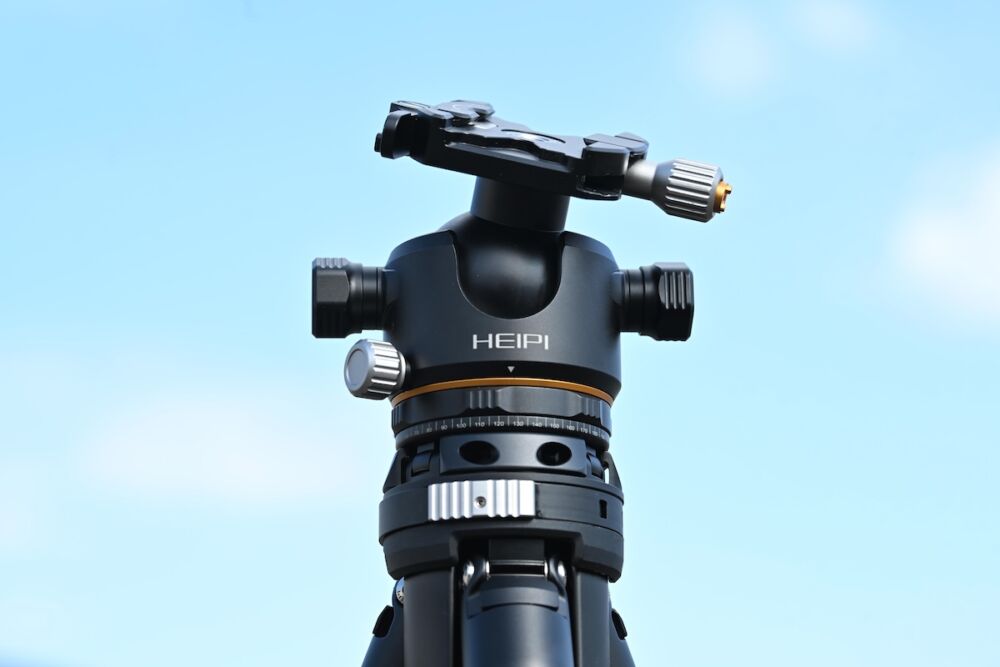New lenses for the Sony E mount have been popping up a lot lately, both primes and zooms. Unfortunately, the vast majority of them are normal or wide-angle focal lengths! The super-telephoto realm is not getting nearly as much love, not from Sony themselves, nor the numerous third parties. Thankfully, Tamron is the first third-party lens maker to break the 500mm barrier for a super-telephoto zoom. In this Tamron 150-500mm review, I will tell you exactly why you should absolutely check this lens out if you’ve been wanting to get all the way to 500mm!
To spoil the ending, if you’re looking for a relatively affordable lens with truly excellent performance, this Tamron 150-500mm might be just right for you. However, there are also some great competitors, if you are interested in all of the various focal range options, such as 70-300mm, 100-400mm, 150-600mm, or 200-600mm.
The bad news is, deciding between any of these lenses based on their performance alone would be almost impossible, because they’re all excellent. The good news is, this means that depending on the type of photography you do, what your budget is, and of course how big and heavy of a lens you are willing to carry around, …one of these lenses might be perfect for you!
So, let’s dive into this review of the Tamron 150-500mm f/5-6.7! I’ll go over the different types of uses that this lens would be perfect for when you might want to opt for an alternative for your photography with a telephoto zoom, and of course, I’ll dive deep into things like image quality, build quality, and whether the price is a good value!
Tamron 150-500mm f/5-6.7 Di III VC VXD Specifications

- FOCAL LENGHT & ANGLE OF VIEW: 150-500mm, (16° 25′ to 4° 57′)
- LENS MOUNT(S): Sony E (FE full-frame)
- APERTURE & RANGE: f/5-6.7, f/22-32; 7-blade rounded aperture
- STABILIZATION: Yes, Vibration Compensation (VC); unspecified number of stops
- AUTOFOCUS: VXD linear motor, virtually silent
- MANUAL FOCUS: Electronically controlled, no focus distance scale
- OPTICAL CONSTRUCTION: 15 elements in 16 groups, 1 extra-low dispersion, 5 low-dispersion, 2 hybrid aspherical elements, BBar-G2 coating, fluorine coating.
- MECHANICAL CONSTRUCTION: Metal, plastic, weather-sealed
- TRIPOD COLLAR: Included, Arca-Swiss foot, removable, no “click” positions
- MAGNIFICATION & FOCUS DISTANCE: 0.32x magnification, 23.6″ (60 cm)
- FILTER THREADS & HOOD: 82mm filter threads, one-piece plastic hood
- SIZE: 3.7 x 8.3 in (93 x 209.6 mm)
- WEIGHT: 4.14 lb (1.88kg)
- PRICE: $1,399 (B&H | Adorama | Amazon)
Tamron 150-500mm f/5-6.7 Review | Who Should Buy It?

There are lots of photography subjects that can be truly exciting to view through a lens with a focal length of 500mm. Besides professional athletes and exotic wildlife, of course, you can find a purpose for literally anything from landscapes to abstract nature details.
Honestly, just about the only thing that I wouldn’t love to use this lens for would be, of course, indoor portraits! It may seem over-the-top to claim that I love to see what almost any subject looks like through a lens that starts at 150mm on its widest end and goes all the way to 500mm on the telephoto end, but, it really is quite addicting!
Having said that, the Tamron 150-500mm is, of course, a nearly $1,400 investment, and it does weigh over 4 lbs, so it may not be right for you as just another creative tool. If you’re going to invest in this lens, you’ll want to know that the exact type of photography and your creative style will put it to very good use.
Action Sports Photography



A lot of action sports happen at a distance, of course. Whether you are photographing surfers from a beach or pier, or you’re photographing professional team sports from the sidelines of a game, you’ll probably be able to put the 500mm end of this lens to very good use, and you might not mind that the lens’ widest focal length is 150mm.
Of course, some action sports might actually be better off photographed through a 70-200mm lens; you’ll definitely want to know exactly what your most common shooting distances are before investing in either type of lens.
Last but not least, most action sports take place in very well-lit conditions, so the rather slow aperture range of f/5-6.7 on this lens shouldn’t be too big of a deal-breaker, especially if you are willing to shoot at ISO 1600 or 3200 even in sunlight, in order to achieve an extremely fast shutter speed and really freeze the action.
Wildlife Photography



Wildlife photographers often also need all the “reach” they can get, and in fact, even 500mm might not be enough at times. (We’ll talk about the competitors that reach 600mm later in this review!)
Also, wildlife photography, unlike many action sports, often happens in dimmer lighting conditions, especially around sunrise and sunset, which can really be difficult to do at very dark apertures. (Then again, the similarly priced competitors are also relatively slow apertures at their long end!)
In the sample 100% crop shown below, you are looking at an ISO 1600 image captured at f/7.1.


All in all, this lens is a good choice for any wildlife photographer who wants as much reach as possible but is also on a budget of both money and space/weight.
Landscape Photography



Landscape photographers, of course, care more about sharpness at stopped down apertures than the sheer speed of the aperture at its widest/fastest setting. As such, if you’re a landscape photographer who really loves super-telephoto compression effects, the Tamron 150-500mm is an excellent choice, because as you are about to see, it is very sharp indeed!
Wedding & Portrait Photography
Since this Tamron telephoto lens starts at 150mm, it’s not really practical for portraits or event journalism of any kind. Even if you are photographing a person or event from a great distance, and in bright sunlight, you probably “only” need a 70-200mm, or 70-300mm, or 100-400mm lens at most.
Candid & Street Photography
If you like “people watching” then super-telephoto lenses are always fun. Personally, though, I don’t like the creepy stalker vibe for such street photography; I would much rather use a more normal lens and actually approach people and ask if I can take their picture, or just photograph cityscapes or architecture at wide focal lengths.
Abstract & Fine Art (Close-Up Detail) Photography

Last but not least, I don’t know how else to describe this overall genre of photography, but, simply put, almost any photography subject can be seen in a totally new way when you get to 400mm or 500mm.
Once you really zoom in and get close-up to any subject, the abstract or at least unique creative perspective is just a lot of fun. Compression, subject isolation, and shallow depth of field; each of these visual tools is taken to an extreme once you get towards 500mm.
Tamron 150-500mm f/5-6.7 Review | Pros & Cons


The actual pros and cons of this Tamron lens are going to be very different than, say, comparing two different 24-70mm f/2.8 zooms or comparing two 50mm primes. It will be more like trying to compare a 24-70mm f/2.8 against a 24-105mm f/4, or trying to compare a 35mm prime against an 85mm prime.
In other words, this Tamron 150-500mm is so unique, that all of the little quirks, advantages or disadvantages, will probably not be deal-breakers for you. Basically, all that will matter is this: are you, the photographer, interested in this exact zoom range? SPOILER ALERT: This is an excellent lens. It’s just a unique focal range and a pretty big/heavy investment.
Having said that, let’s break down the aspects of image quality and the other pros and cons of this lens.
Image Quality
When testing and demonstrating the image quality of a super-telephoto zoom lens, there are a few things to keep in mind. Basically, the main emphasis is going to be in the central part of the image when it comes to sharpness and other things like color fringing; the extreme corners of this lens just aren’t going to be very important to most action sports and wildlife photographers. Furthermore, sharpness at the telephoto end of this lens is going to be extremely important; nobody wants to buy a super-telephoto lens and then need to then remind themselves to zoom out a little bit if they want the sharpest possible results!
Also, another very important consideration is the bokeh; virtually every photo you take with this lens will have a blurred background. Oppositely, of course, you won’t have to worry very much about things like distortion or vignetting, as long as they’re decently well-controlled.
For these reasons, I’ll be ranking the lens quite highly for image quality, (I might even give it a 10/10, I haven’t decided yet!) …even though I will be holding it to very different standards compared to most other lenses.
Sharpness


Sharpness is truly excellent throughout the entire zoom range. Honestly, if this lens got “a little soft” at 500mm, and if I felt inclined to suggest that you either stop down or zoom back out to, say, 450mm or 400mm, then I flat-out wouldn’t recommend buying this lens, period.


At 500mm, thankfully, sharpness looks nearly identical to every other focal length. This is truly impressive for a lens of this zoom range, price tag, and portability.
If you pixel-peep the extreme corners, you will see softness. However, truthfully, this is a compromise I am happy to make in order to get such incredible image quality in such a relatively portable package.
NOTE: When you are using a super-telephoto lens, you will often be “seeing through” a lot of atmospheric haze and other distortions that can harm your image quality. Whether it is a burning-hot day or just a hazy, smoggy, or un-clear day with poor visibility, don’t be fooled into thinking that a 400mm or 500mm lens is “soft”, just because your images are soft! As the above examples prove, this lens is capable of excellent sharpness. However, as you will see below; in poor conditions, sometimes overall image detail can suffer.
In the above example, you’ll also notice that there are weird patterns in the bokeh. This is one telltale sign that you are in conditions of extreme heat. If the subject had been any further away, the image detail would have been likely totally ruined.
Bokeh


Bokeh is extremely soft and smooth. Any close-up images render both foreground and background blur with a creaminess that you’re only used to seeing with an 85mm f/1.4 prime! I found myself continually surprised at how gorgeous close-up nature imagery was.
In other words, don’t let the relatively slow aperture range fool you; bokeh is not just affected by aperture numbers, it is definitely a subjective characteristic that has a lot to do with the optics of the lens, and of course the focal length and subject+background distances.

Just about the only time bokeh will get “busy” is if you are photographing truly “nasty” stuff like dead twigs in bright sunlight, which is to be expected; even a $10,000+ exotic pro lens isn’t going to do much better in such sub-optimal conditions!
Colors & Contrast

Overall contrast and colors are rendered very clear and vibrant. No complaints! Sometimes third-party lenses can have a faint color cast compared to a name-brand competitor, but in this case, I feel like setting your white balance correctly for the scene will always be far more important than anything else.
Vignetting & Distortion

As I mentioned earlier, this just isn’t a very important aspect of testing for a lens like this. Unless you have a very urban, architectural shooting environment, or another scientifically accurate photography genre, distortion is just not going to be a noticeable issue on this 150-500mm lens.

Vignetting is going to be present but un-distracting, especially if you leave the in-camera correction turned on.
Sunstars & Flare

You will probably find yourself trying to avoid flare of any kind with this lens, and thankfully, with the substantial hood and the excellent glass coatings, you can expect clear, crisp images even in severely backlit conditions.
Also, sunstars can be visible even at f/8, if you look closely in extremely bright spectral highlights, which is really nice for photographers who might want that faint twinkle but aren’t able to stop all the way down to f/16 or f/22 to get a clear starburst.
Color Fringing, Aberration, Coma & Astigmatism



Almost all of these things are not very important on such a super-telephoto lens. Simply put, unless you want to do deep sky astrophotography with it, (which, you could do!) …your main concern is going to be whether or not there is any color fringing at the edges of your bokeh/in-focus zones when shooting wide-open.

There is virtually no color fringing whatsoever with the Tamron 150-500mm, even around harsh highlights and with wide-open apertures.
Macro & Close-Up Photography


When focusing very close, this lens doesn’t qualify as a “dedicated macro” lens, however, its super-telephoto focal range does render any subject as if it were a macro subject, due to how shallow your DOF inherently will be at such focal lengths as 300-500mm.
Thankfully, this lens is still incredibly sharp even when you’re focusing at its closest/minimum focusing distances.
Stabilization Performance

Before we move on from image quality, there is something that needs to be mentioned which directly relates to image quality, and that is, how well the VC (Vibration Compensation) system works. Unfortunately, Tamron doesn’t list a specific number of stops anywhere, and when you’re capturing moving subjects at a focal length like 500mm, the “safe” shutter speed rule of thumb starts flying out the window.
Basically, at 500mm, a full-frame camera ought to be hand-holdable at 1/500 sec. However, these days with sensor resolutions going higher and higher, I tend to at least double that rule, say for example 1/1000 sec, and maybe even 2 stops just to be safe with fast-action subjects. This means I’m at about 1/2000 sec for most hand-held, high-speed subjects.

In testing, I felt barely comfortable shooting hand-held at around 1/160 or 1/250 sec with the VC “saving the day”, and even then, it wasn’t 100% consistent. So, depending on how you look at it, this lens’ stabilization is “only” helping by 1-2 stops, maybe up to 4 stops if you’re a “safe” shooter who starts counting EVs at an increased rule of thumb.
Design & Durability

Now that we know the image results are able to meet a very high standard, let’s talk about the lens itself from a physical build quality standpoint!
The Tamron 150-500mm lens is incredibly well-built. It is a delightful balance of rugged durability and realistic portability, for all those photographers who aren’t getting paid to lug a “big gun” monster of a lens into the backcountry, but who still want something that can take a beating on their next photography excursion or vacation.

In terms of the actual physical design, it is exactly what I have come to expect from Tamron for this flagship class of lenses. (Meaning, it may not have an “SP” label, but it’s definitely not a basic “kit” lens!) The main parts of the barrel feel nearly indestructible, and the extending part of the zoom feels sturdy enough that it will last a lifetime as long as I don’t drop it, or leave it to rattle around on the floor of my car on a dirt road all day.
I don’t mind extending lens barrels, though some photographers do. Portability is something I can appreciate, though, and as long as the lens is weather-sealed, (this one is) I never hesitate to take a lens like this out into a bit of rain or dust…
Features & Customizations

Again, this is one of Tamron’s better designs, on par with their flagship “SP” line of DSLR lenses. A full array of switches adorn the barrel of the 150-500mm, strategically placed in between the focus ring and zoom ring.

This lens does have a really useful Arca-Swiss compatible dovetail on its tripod foot, however, the removable tripod collar has no click-stops at 90-degree angles like a few others might have.

The zoom ring has a really cool feature that I’ve never seen before, and quickly grew to enjoy: The zoom ring has a forward-shifting clutch mechanism that allows you to lock the lens at any focal length you want, instead of just a single switch to lock the lens at its most collapsed position. (Which, by the way, this lens also has.)
Last but not least, there are no customizable Fn buttons on this lens, unfortunately. Honestly, though, as much as I always love button customization, I’ve never really missed this feature when it’s not there.
Autofocus Performance

For a big telephoto lens, autofocus performance is honestly just as important as image quality itself! If a lens doesn’t have the chops to move all that glass fast enough to focus on, or track, a fast-moving subject, then it becomes almost un-usable for certain types of work.
In the past, affordable super-telephoto lenses would skimp out on a big, powerful autofocus motor, unfortunately. The Tamron 150-500m is not one of those lenses; its AF motor is impressively fast, it can “rack” focus from near to far lightning-quick, and it nails focus almost every time in most lighting conditions, on any of the latest Sony cameras that have their latest-and-greatest AF processors and algorithms.
Manual Focus Performance

Considering how telephoto this lens is, you will probably be relying on autofocus almost all the time. However, sometimes even when you’re using AF and getting close but still not perfectly sharp, (say, in low light, and the subject doesn’t have much texture) being able to manual focus easily is an added bonus for many photographers.
Thankfully, the manual focusing precision and focus throw of this lens are pretty good. It’s not as excellent as a fully mechanical focus ring, and the lens doesn’t have a focus distance window like the DSLR-made 150-600mm, etc. super-telephoto zoom lenses have, but that’s probably not going to be a deal-breaker for any purchasers of this lens. (Focus distance can be displayed on your Sony mirrorless camera’s screen, of course)
Value
At $1,399, this lens is incredibly affordable as far as lenses reaching 500mm are concerned. In fact, when you combine its image quality with its overall build quality, you are basically getting a nearly flagship-grade lens at a “prosumer” price.
The only way to potentially get a slightly better value is if you are either willing to compromise on your focal length, and get a 100-400mm or 70-300mm instead, or willing to use an adapted DSLR lens on your (Sony?) mirrorless camera. Aside from those alternatives, this Tamron is not just a good value, but it’s one of the only choices in its price range.
Tamron 150-500mm f/5-6.7 Review | Compared To The Competition

The Tamron 150-500mm f/5-6.7 is the only lens available that offers its exact focal range natively on the Sony E mount, however, there are a few good competitors that you should consider, depending on what you are looking for.
For just a little bit more money, you can get the bigger, heavier, but yet-un-reviewed Sigma 150-600mm f/5-6.3 DG DN OS Sport. I haven’t reviewed the Sigma yet, so I won’t say something like, “it’s a good choice if you can afford it and are okay with an even bigger lens that is almost a pound heavier” …because that would be unprofessional of me to say without knowing for sure how good a lens actually is.
The only other relatively affordable E-mount lens that offers 500mm is, of course, Sony’s own 200-600mm f/5.6-6.3 G OSS. It costs $1,998, and it’s a “G” lens, not a “GM” (GMaster) lens, however, it is quite impressive. It reaches 600mm, however, it is also quite big and heavy, with its fully internal zooming and very robust overall construction.
“Cropping In For Extra Reach”
Now, before we talk about alternatives that are less than 500mm, I need to mention something that I haven’t really mentioned yet: Even at 500mm, a lot of the photos in this review were cropped in substantially on a Sony A1, and/or captured on an APS-C (1.5x crop, so, 750mm equivalent) Sony A6600.
So, if you really do love photographing wildlife of any kind or telephoto action sports, you might want to only consider this Tamron 150-500mm, or one of the alternatives that hit 600mm!
Having said that, moving on down the line! For just a little bit less money, ($949 at present) you can get the lighter and smaller Sigma 100-400mm f/5-6.3 DG DN OS C. It doesn’t come with a tripod collar, though, and it really does need one. (It’s not that lightweight, and is very, very front-heavy if you attempt to mount it to a tripod or monopod from the camera’s tripod plate.)

For those who really don’t need 500mm, and are actually just looking for something that is slightly longer than the common 70-200mm focal length, the Tamron 70-300mm f/4.5-6.3 Di III RXD is a winner for its ultralight portability, and low price tag of $499.
I could write an entire article about the DSLR-made alternatives that you could choose, but, suffice it to say, they’re all quite decent, and if you already own one of them you might be happy with what you’ve got. This Tamron’s native E-mount advantage, of course, will be its autofocus reliability and its impressive portability as a 500mm-capable zoom.
Tamron 150-500mm f/5-6.7 Review | Conclusion

![]()
Finally, the super-telephoto zoom category is getting some great options if you are a Sony E-mount user. Whether you are working with a full-frame mirrorless camera or an APS-C E-mount body, the Tamron 150-500mm is an excellent balance between the traditional 100-400mm focal length and the mirrorless (and DSLR) options that reach 600mm, but are bigger and heavier too.
It’s incredibly sharp, the autofocus is snappy and excellent at tracking fast-moving subjects, and the overall quality is worth the investment. If you like what you see, then you won’t regret acquiring this lens!
Check Pricing & Availability
The Tamron 150-500mm f/5-6.7 is available for $1,399, and includes both an Arca Swiss tripod foot and a sturdy hood.















